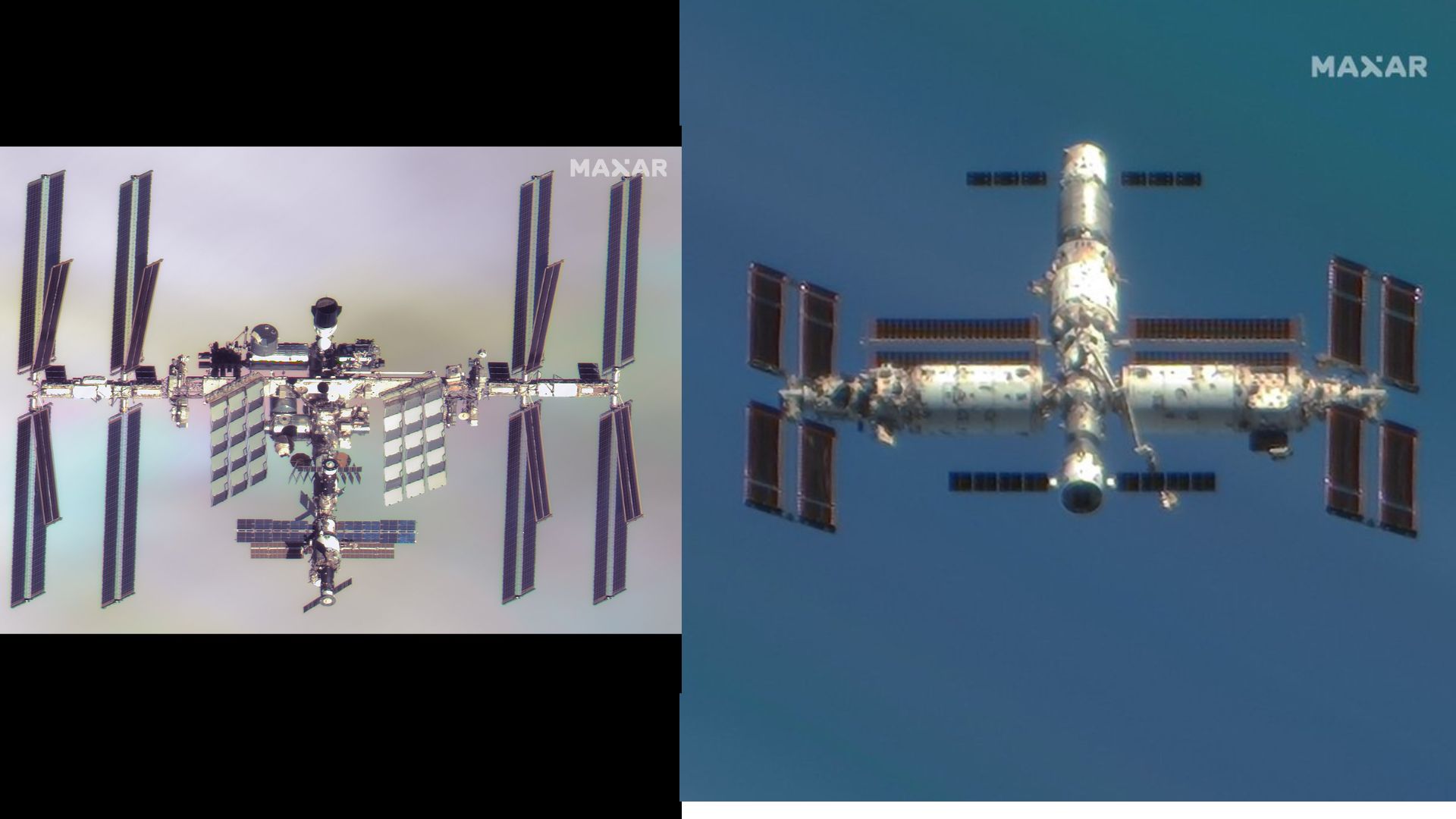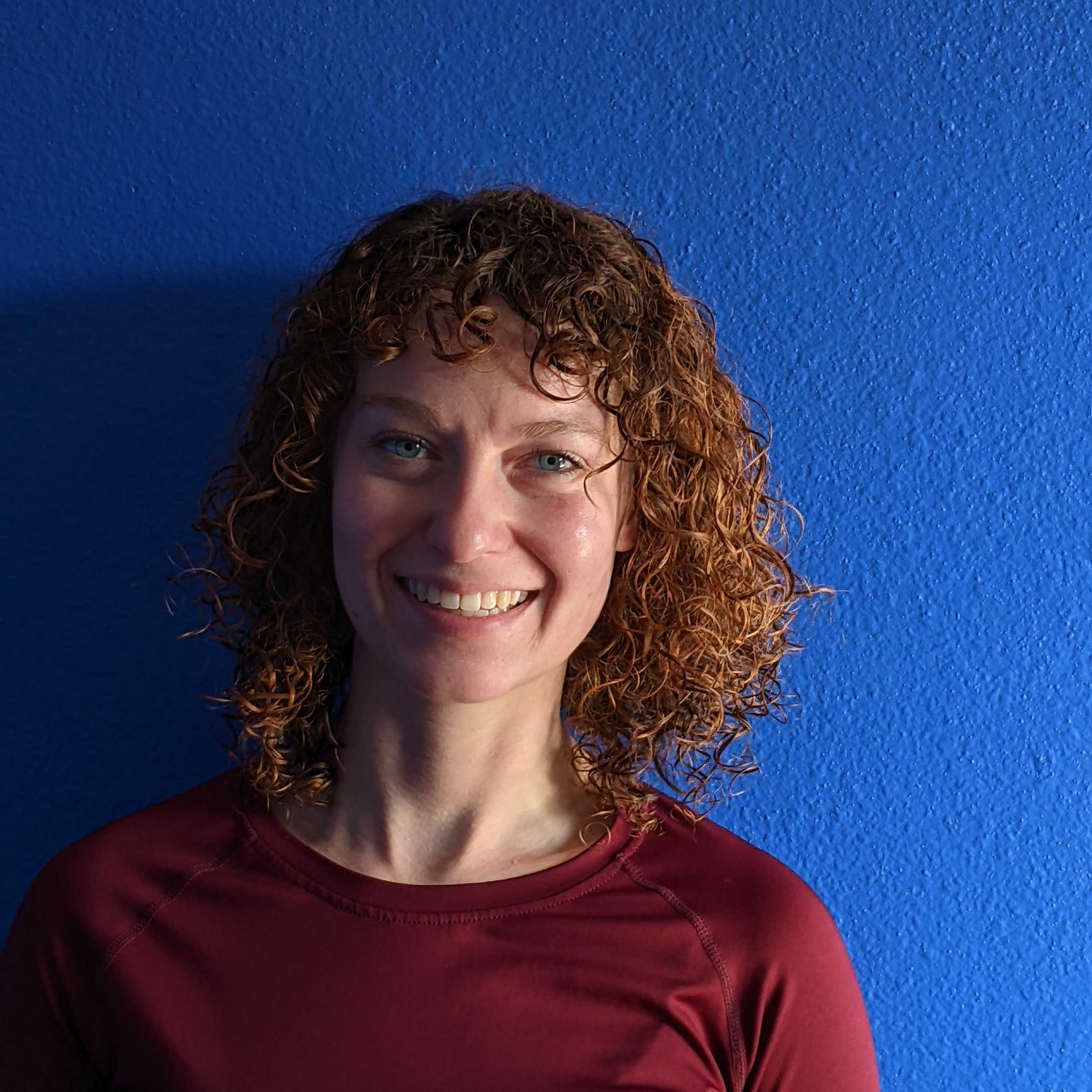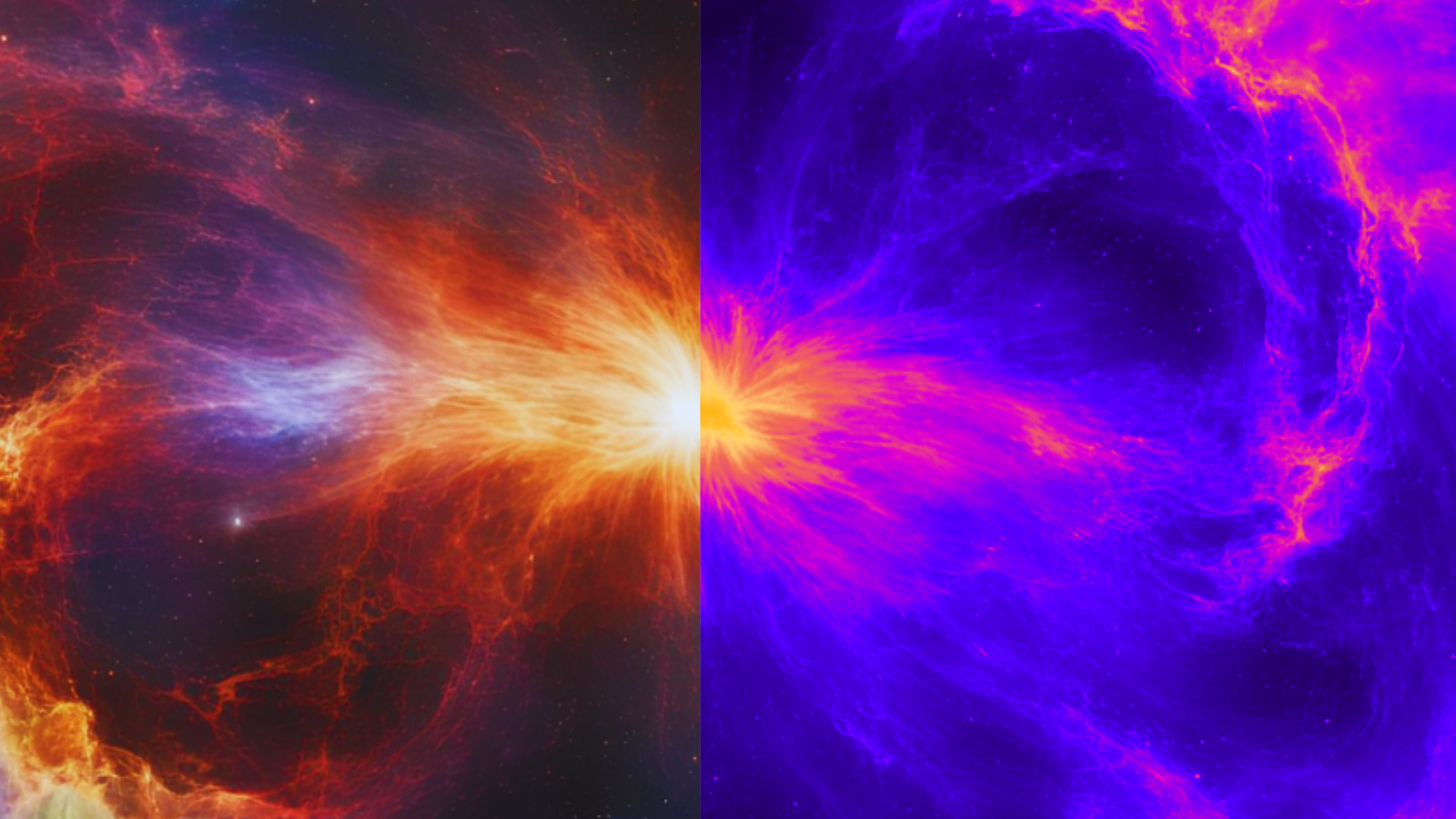Satellite spies both ISS and China's Tiangong space station | Space photo of the day for July 4, 2025
Both stations are hubs of scientific research.

Since 1998, when the International Space Station (ISS) launched, there has been a place for astronauts around the world to run experiments in space, from growing food to learning how low-Earth orbit affects the human body.
More recently, the Chinese Tiangong Space Station was fully completed, with its third and final module, the Mengtian, added on Oct. 31, 2022. Tiangong sits at the same height as the ISS.
What is it?
The ISS is a joint venture between NASA, Roscosmos, the European Space Agency (ESA), the Japanese Aerospace Exploration Agency (JAXA) and other organizations. It's been continuously inhabited since 2000 and serves as a microgravity laboratory for research in biology, physics, medicine and earth sciences. The ISS is significantly larger than the Tiangong Space Station, as the ISS has 16 modules while Tiangong only has three.
As China was excluded from the ISS program, it created its own space station, Tiangong, which shows the nation's prowess in space exploration. Tiangong, which means "Heavenly Palace" in Chinese, was built by the Chinese Manned Space Agency (CMSA) and provides a platform for scientific research for countries not involved in the ISS program.
Where is it?
These two photographs were taken from space, about 250 miles (402 km) from Earth.
Why is it amazing?
These two photos were taken by a Maxar WorldView Legion satellite from low-Earth orbit. In a tweet, Maxar Technologies discussed how their satellites could capture these images with crisp clarity as both space stations continue to move in their respective orbits.
It's difficult to photograph something moving as quickly as the ISS or the Tiangong Space Station. The ISS orbits Earth every 90 minutes at a speed of about 17,500 mph (28,000 km/h) and the Tiangong moves at a similar rate. Being able to capture the detail on both space stations shows the timing and engineering capabilities of the Maxar satellite.
Breaking space news, the latest updates on rocket launches, skywatching events and more!
Want to learn more?
You can read more about the ISS, the Tiangong Space Station, and observation satellites as companies like Maxar continue to study Earth from space.
Kenna Hughes-Castleberry is the Content Manager at Space.com. Formerly, she was the Science Communicator at JILA, a physics research institute. Kenna is also a freelance science journalist. Her beats include quantum technology, AI, animal intelligence, corvids, and cephalopods.
You must confirm your public display name before commenting
Please logout and then login again, you will then be prompted to enter your display name.

